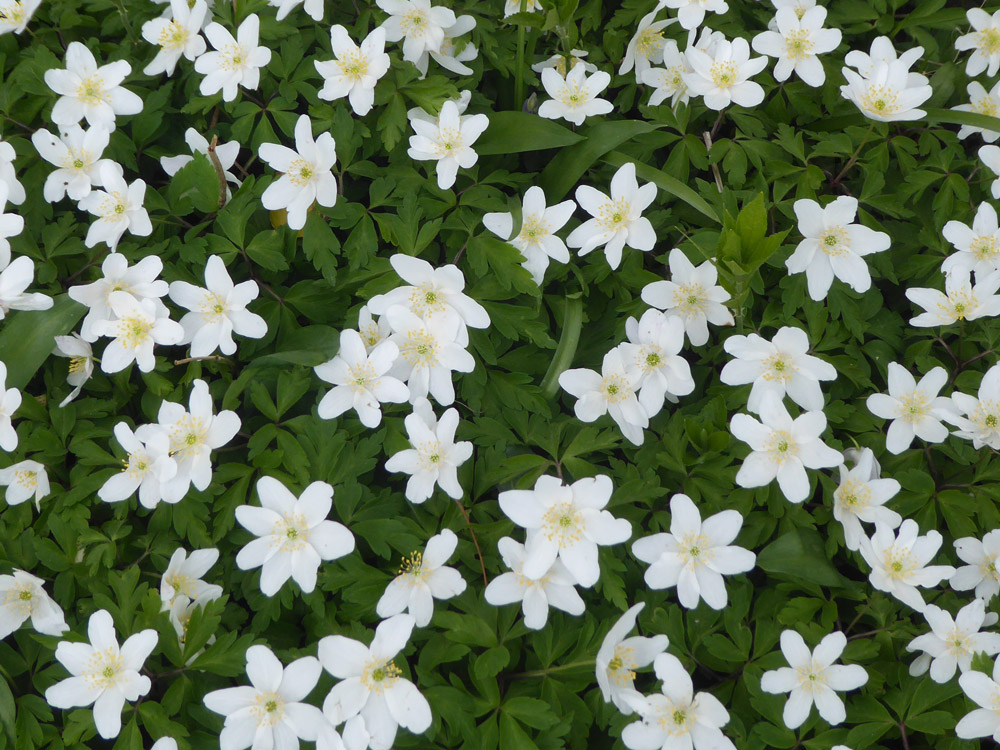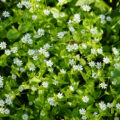Every year, they stop me in my tracks. I cannot walk past clumps of wood anemones without pausing to admire their delicate features as they bow and quiver in the breeze with their pretty heads turned towards the sun. The flower is named after the Greek gods of the wind, Anemoi, who sent their namesake in early spring as a gift to herald their coming. This association with wind has thus given the plant its other common name of ‘windflower’.
It is mid-April now, and I am out walking in my favourite woods. Underneath the sparse canopy, the woodland is bursting into life. Bluebells, seemingly early this year, bring hints of blue amid the yellow of celandines and primroses. Birds are singing and the air is thick with the scent of fresh fronds of wild garlic. Against the tree trunks there are patches of woodruff and wood sorrel, and the occasional tiny clump of moschatel, whose flowers stand like four-faced clock towers. Yet, despite the welcome appearance of all these old friends, it is the galaxy of star-shaped windflowers that I love the most.
Windflowers are generally associated with ancient woodlands or undisturbed verges and hedgerows. Although the flowers are pollinated by insects, the seeds of the plant are mostly infertile. Propagation therefore relies on the growth of its rhizomes, which can take a surprisingly long time. The plant often spreads only 6ft in 100 years, making it even more remarkable to behold. Here in Dorset, we are blessed with such places where this delightful flower can prosper.
Like many of our wildflowers, the wood anemone is stooped in myth and legend. Reference to it appears in Shakespeare’s Venus and Adonis, where he relates the story of when Aphrodite’s lover Adonis was killed while hunting a wild boar. Her tears of grief turned into windflowers, and now ‘where streams his blood there blushing springs a rose, and where a tear has dropped, a windflower blows’. The sadness of such a story is why in the Language of Flowers, wood anemones signify brevity, abandonment and a dying love.
Dr Susanna Curtin is a nature writer and qualitative researcher (rewildingjourneys.com).
by Dr Susanna Curtin











Leave a Reply